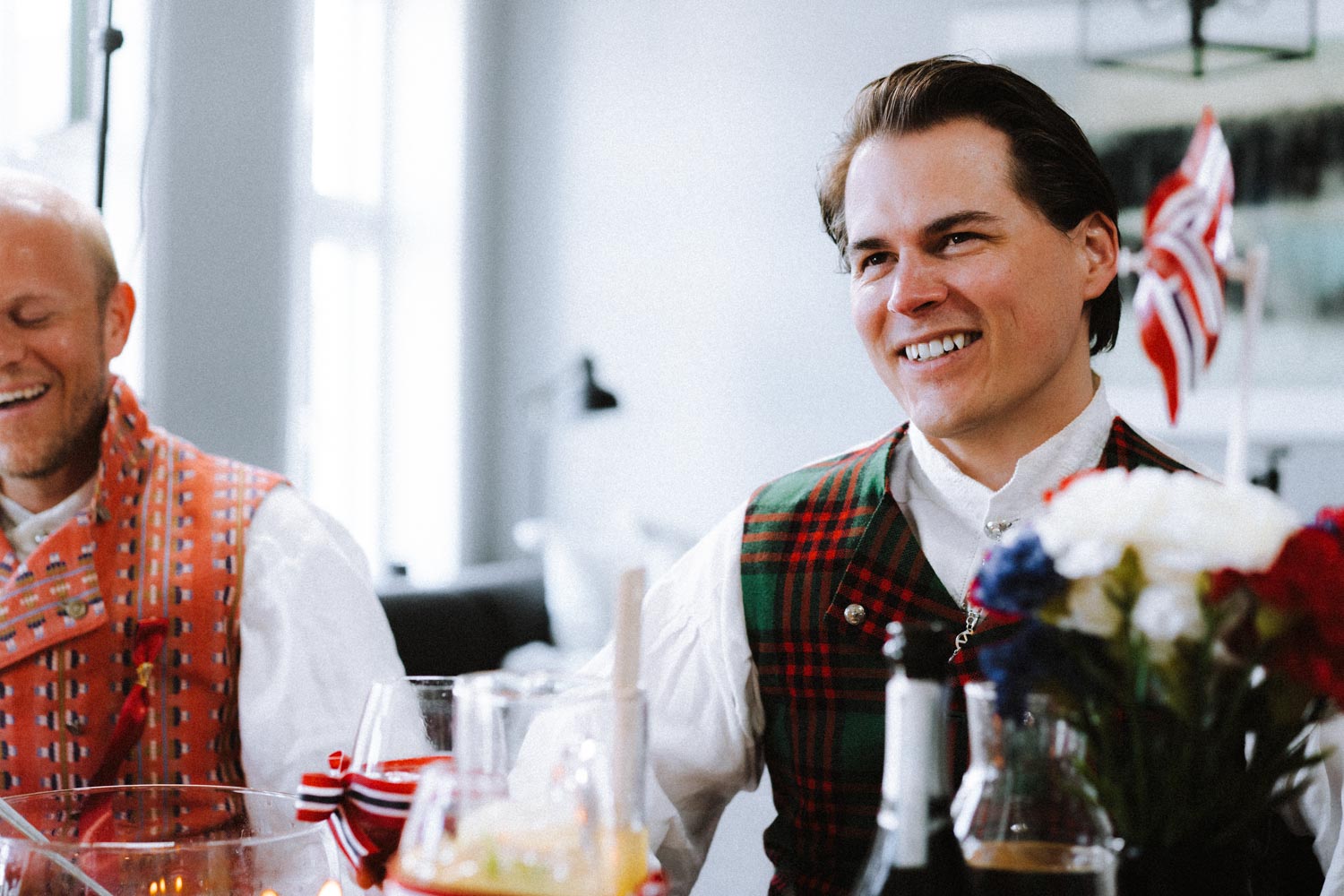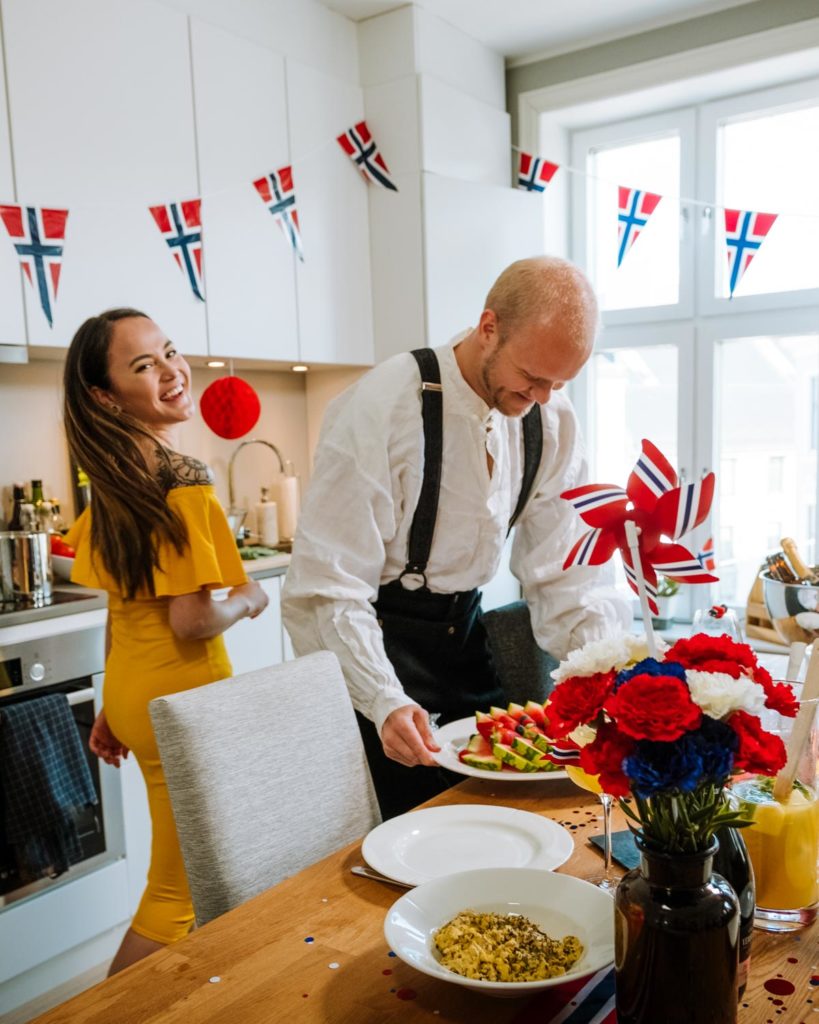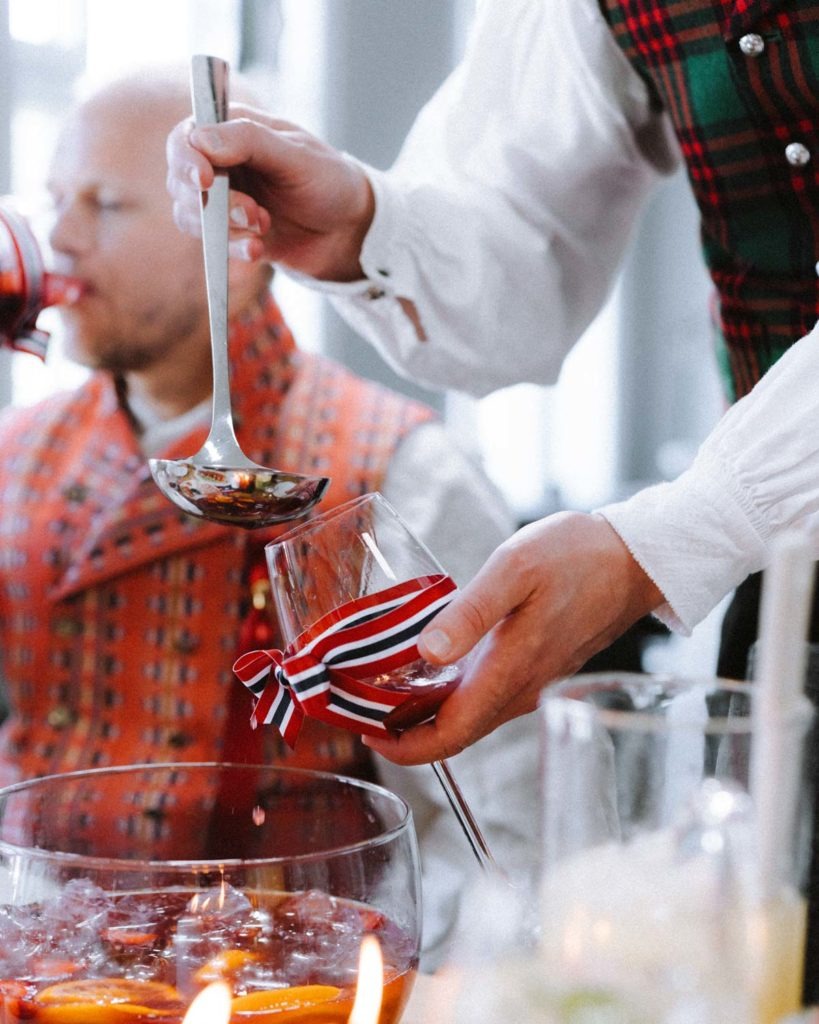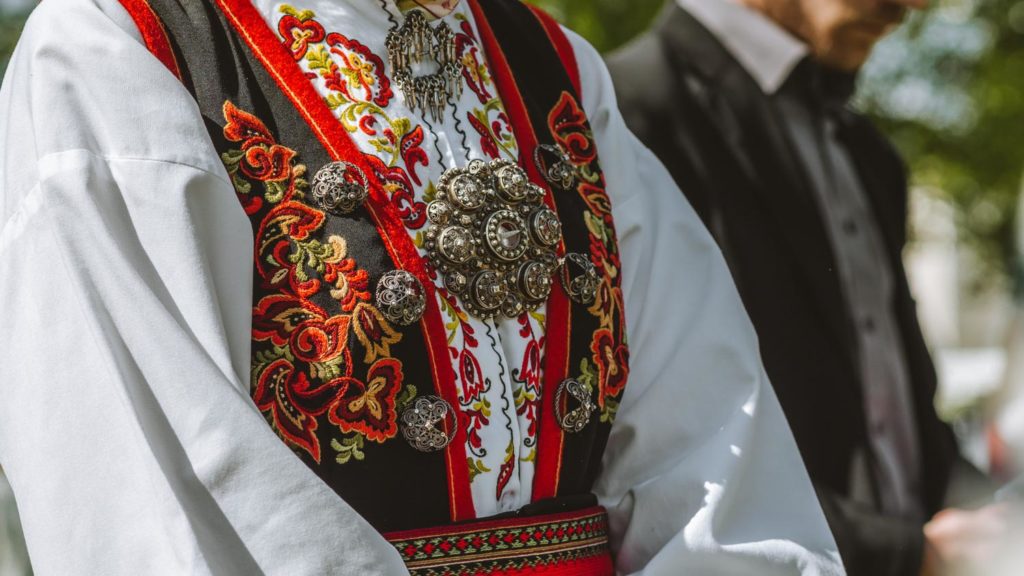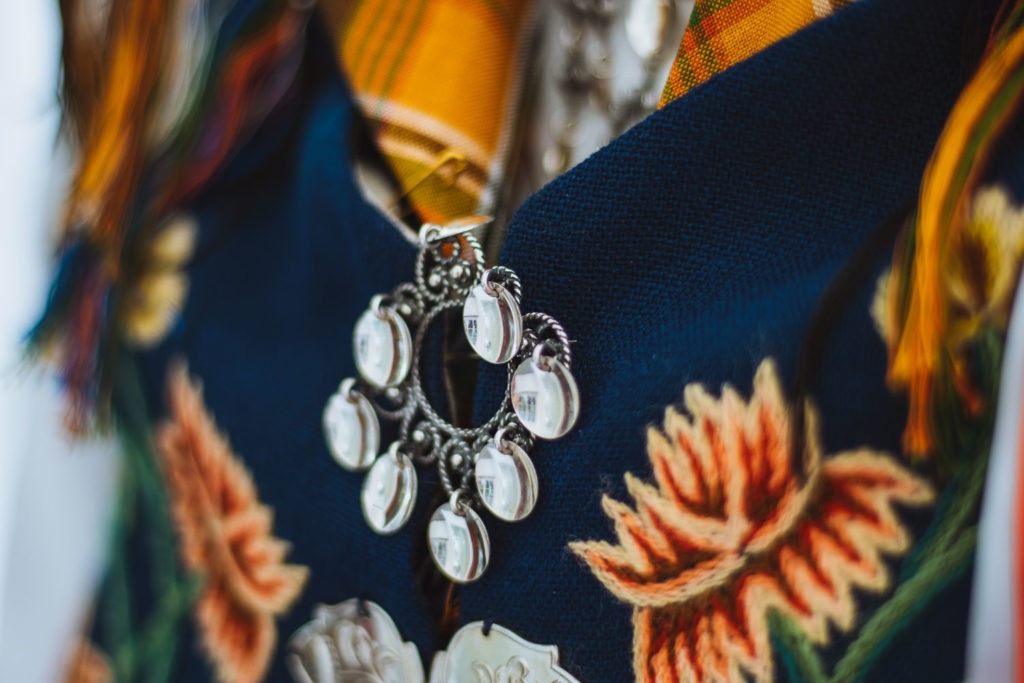A Symbol of Heritage
Small fjord villages, large counties, and big cities alike, all have their own kinds of bunad designs. A wide range of fabrics, colours and patterns, makes every bunad unique while still keeping the traditional look. Being widely accepted as a festivity attire, the bunad is commonly seen large celebrations and cultural events, as well as smaller events like baptisms, confirmations and weddings. Some Norwegians even marry in their bunad, visualizing the bond between regions of Norway.
In the arctic areas of Norway, it is usual to see another prideful dress alongside the Norwegian bunad. The gákti, the Sámis’ traditional clothing, a sign of heritage and culture is often used in the same setting as the bunad. We highly suggest reading more about the gákti in our story, The Sámi’s Prideful Clothing.
The Day of the Bunad
There is no day the bunad is more in use than on the Norwegian Constitution Day, the 17th of May. If you haven’t had any opportunities to use your bunad the past year, The Constitution Day is your yearly occasion to brush the dust off your bunad and get ready for the celebration. On The Constitution Day, millions of bunads are in use all across Norway, making the celebration a colourful, and spectacular sight.
Speaking of the Norwegian Constitution Day, we just published a blog post, dedicated to the momentous day. Learn more about The Constitution Day in our post, Celebrating Norwegian Values, Culture, and Freedom.
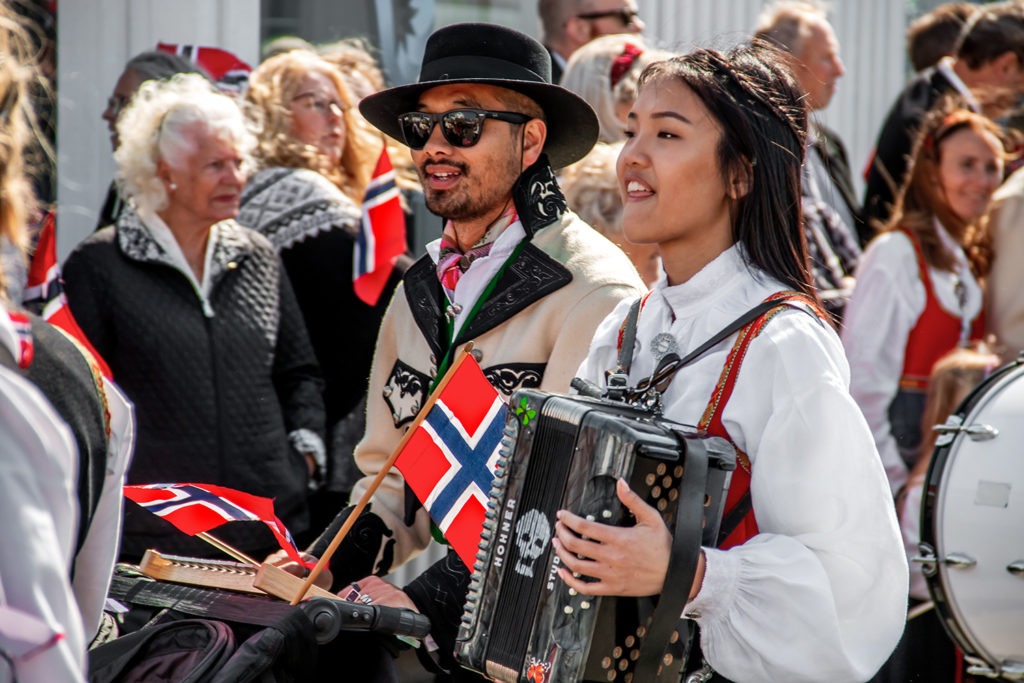
Old Traditions
Most of today’s bunad traditions and designs have roots from the 18th century, but there are some dating all the way back to the middle ages. A couple of hundred years ago, the bunad was not commonly used in festivities, but this changed around the middle of the 1900s. After the second world war, the trend of having a bunad spread quickly. After years of occupation, Norwegian romantic nationalism grew, and people began following older Norwegian traditions to a greater extent than before. Bunads became a symbol of Norwegian culture and a highly demanded product.
Valuable Clothing
Being hand made by craftsmen across the country, the Norwegian bunad can become very expensive. The craft, the fabrics, knives, gold, and silver may cost over 50.000 Norwegian kroner all together, equating to around £4000. The 2,5 million bunads in Norway have an estimated value of over 30 billion Norwegian kroner, roughly 2,3 billion pounds. Although the price might be steep, the sedimental value and pride from having a bunad heavily outweigh the economic cost. You can put a price on craft, but you can’t price pride.
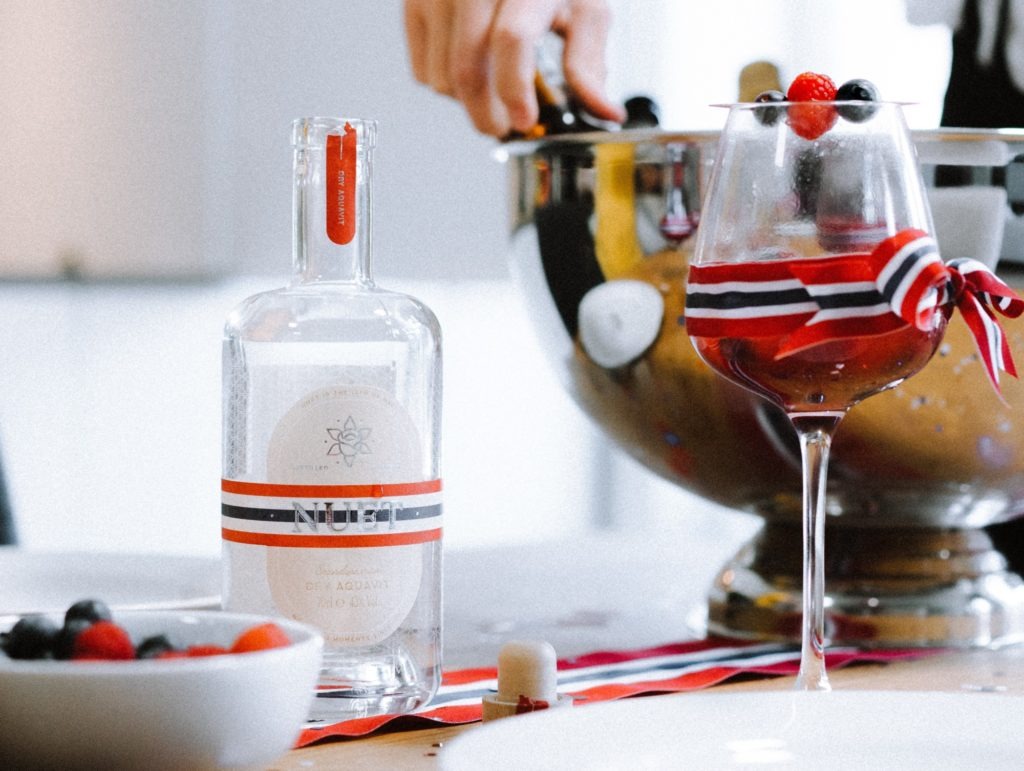
Great Design
Alongside the bunad, there is another spectacular design present in The Constitution Day celebrations. Tomorrow, on the 8th of May, we release the 17th of May limited edition Nuet Dry Aquavit. Wrapped in a Norwegian coloured ribbon and with a silver rose, the design adds a little luxury to this special occasion. Just like the bunad, Nuet Dry Aquavit is handcrafted with love and passion. From washing to filling to labelling, the entire process of making the tasteful and refreshing drink is done all by hand. Buy your Limited Edition Nuet Dry Aquavit in our store, and experience true Scandinavian moments from the first taste.
Interested in Scandinavian culture? Here at Nuet, we publish weekly blog posts about everything Scandinavian. Read more at nuetaquavit.kinsta.cloud/stories, and follow our Instagram @nuetaquavit to get instant updates on new posts directly into your feed
